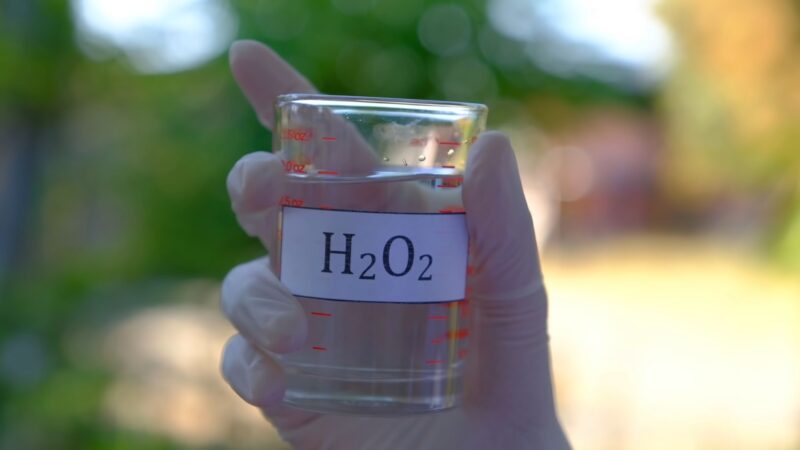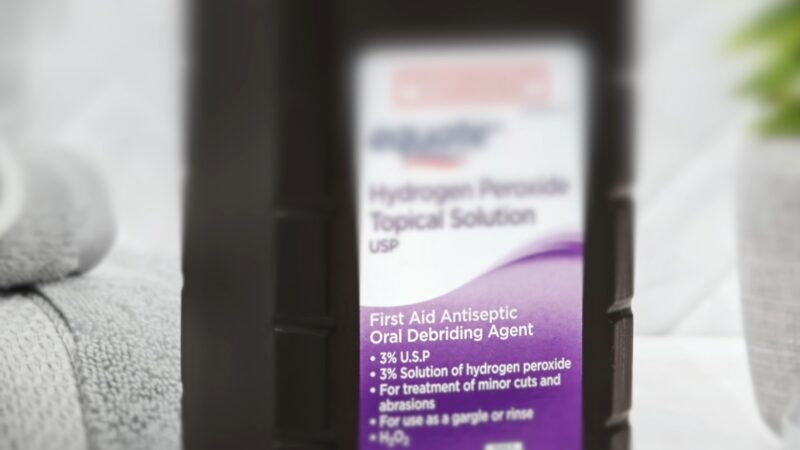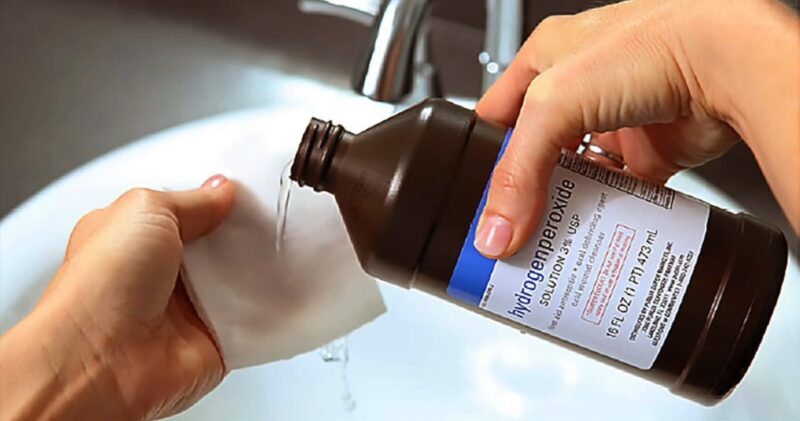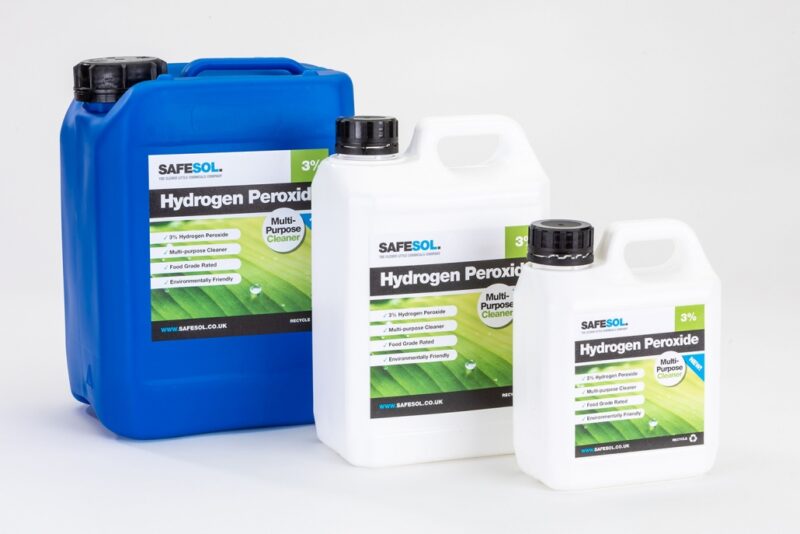In recent years, the quest for safer and environmentally friendly cleaning products has led to the reevaluation of traditional disinfectants. Hydrogen peroxide emerges as a standout for its versatility and safety profile. Not only is it used in medical settings, but it’s also a common household item, known for its efficacy in killing bacteria and viruses.
Its simple composition—water with an extra oxygen atom—makes it a preferable choice for those conscious about the impact of cleaning agents on their health and the environment.
The use of hydrogen peroxide as a disinfectant comes with several advantages over more conventional options. Unlike bleach and other harsh chemicals, hydrogen peroxide breaks down into non-toxic elements, leaving no harmful residues behind.
This characteristic makes it a superior choice for homes, particularly in areas in frequent contact with skin or food. Additionally, it is straightforward to apply, with guidelines that are easy to follow, ensuring that it can be used effectively without specialized training.
Key Takeaways
- Hydrogen peroxide is effective in killing germs and safe for the environment.
- It breaks down into water and oxygen, posing no risk of toxic residues.
- It can be used easily and effectively with minimal risk.
The Chemistry of Hydrogen Peroxide

Hydrogen peroxide (H₂O₂) stands out in the world of disinfectants due to its simple, yet potent structure. I like to think of it as water’s cousin, with that extra oxygen atom making all the difference. In its purest form, it exhibits a pale blue color and has a slightly increased viscosity compared to water.
While most people are familiar with the dilute solutions found in brown bottles at pharmacies—typically 3% to 6% H₂O₂ in water—my interest peaks with the molecule itself. Here’s a breakdown of its constituent elements:
- Hydrogen: 2 atoms
- Oxygen: 2 atoms
The covalent bonds between these atoms create a non-planar structure, which is less stable than the water molecule (H₂O). This instability is precisely why hydrogen peroxide is such an effective oxidizer and antiseptic.
When I use it as a disinfectant, the extra oxygen atom eagerly reacts with organic compounds, including bacteria and viruses. It breaks down their cellular structures, which is a key reason why hydrogen peroxide is a safer disinfectant.
However, H₂O₂ must be handled with care. In high concentrations—greater than the over-the-counter varieties—it can be corrosive and cause skin irritation. That’s why it’s crucial to ensure proper dilution before I consider using it on surfaces or, in very low concentrations, as a mouth rinse.
What intrigues me the most, though, is its decomposition. Over time, or when exposed to light and heat, it breaks down into water and oxygen. This benign end result appeals to my environmentally conscious side, cementing its position as a reliable and eco-friendly option for routine disinfection.
Benefits of Hydrogen Peroxide as a Disinfectant

In exploring the advantages of hydrogen peroxide as a disinfectant, I’ll focus on its effectiveness against pathogens, its environmental safety profile, and its accessibility and cost efficiency. These characteristics make hydrogen peroxide a compelling choice for various disinfection needs.
Effectiveness Against Pathogens

Hydrogen peroxide is a powerful disinfectant, capable of killing a wide range of microorganisms, including bacteria, viruses, fungi, and spores. The efficacy of hydrogen peroxide is backed by scientific research and its use in medical settings.
For instance, a mixture of 50/50 hydrogen peroxide and water has been recommended for disinfecting surfaces, effectively reducing the risk of infection in households and hospitals.
Environmental Safety
As an environmentally safer disinfectant compared to many alternatives, I appreciate that hydrogen peroxide breaks down into water and oxygen. This decomposition means it doesn’t leave behind harmful residues or produce toxic by-products, making it a more sustainable option for routine disinfection tasks.
Accessibility and Cost Efficiency
Hydrogen peroxide is not only effective and environmentally benign but also widely available and inexpensive. This disinfectant can be purchased in a variety of concentrations, with the common 3% solution found in brown bottles at pharmacies being highly cost-effective. Its affordability and availability ensure that I can readily use it both as a disinfectant and antiseptic as needed.
Application Guidelines for Hydrogen Peroxide
In my experience with hydrogen peroxide, it is not only a potent antimicrobial substance but also versatile in its application. Below, I provide specific guidelines to employ hydrogen peroxide effectively in surface disinfection while maintaining safety protocols.
Surface Disinfection Procedures
When using hydrogen peroxide for surface disinfection:
- Prepare a Solution: For general cleaning, a 3% concentration is typically sufficient. It can be used directly or diluted with water for sensitive surfaces.
- Contact Time: Apply the solution to the surface, ensuring a wet contact time of at least 10 minutes to effectively kill bacteria and viruses.
- Process: Use a clean cloth or spray bottle for application. Ensure the surface stays wet with the solution throughout the entire contact time.
- Rinse (if necessary): Some surfaces may require rinsing with water after the disinfection process, especially in areas where food is prepared.
For laboratory-grade cleanliness, a 6% solution is commonly utilized due to its enhanced bactericidal and sporicidal efficacy.
Safety Measures and Concentration Levels

When handling hydrogen peroxide, safety is paramount. The following measures are recommended:
- Personal Protective Equipment (PPE): Always wear gloves and eye protection when handling concentrated solutions of hydrogen peroxide.
- Ventilation: Ensure good ventilation in the area to avoid inhalation of vapors, which can be irritating.
- Storage: Hydrogen peroxide should be stored in its original container, away from heat and direct sunlight to prevent decomposition.
Regarding concentration levels, it’s essential to be aware that:
- Household Use: Typically, a 3% concentration suffices for most household disinfecting needs.
- High-Level Disinfection: In medical settings, a higher concentration of up to 6% may be necessary for disinfecting equipment like endoscopes.
In any case, it’s crucial to refer to the manufacturer’s guidelines or a professional reference to ensure the chosen concentration level of hydrogen peroxide is adequate for the intended disinfection purpose.
Comparative Analysis With Traditional Disinfectants
In my examination of hydrogen peroxide as a disinfectant, I find it merits attention due to its relative safety and efficacy compared to traditional disinfectants. Traditional agents like chlorine and ammonia have been used extensively in a variety of settings. However, my review highlights certain distinct advantages of hydrogen peroxide.
Safety Profile: Hydrogen peroxide degrades into water and oxygen; this benign by-product profile is significantly safer for both humans and the environment. Traditional disinfectants, such as bleach, often leave behind harmful residues and toxic by-products.
Efficacy Against Pathogens: Hydrogen peroxide is a powerful oxidizing agent, which allows it to effectively disrupt the cellular structures of various pathogens. While not as potent as some traditional disinfectants on a minute-for-minute basis, its efficacy is substantial and well-documented.
Versatility: Its application spans from surface cleaning to sterilization processes. A 6% aqueous solution is commonly used for laboratory surface cleaning and offers bactericidal and sporicidal effects.
Here’s a table comparing the attributes:
| Attribute | Hydrogen Peroxide | Traditional Disinfectants |
|---|---|---|
| By-products | Water & Oxygen | Varied (often harmful) |
| Efficacy | Effective | Highly Effective |
| Residue | Minimal | Often Significant |
| Environmental Impact | Lower | Higher |
In my analysis, I acknowledge that each disinfectant has its suitable application and context. While hydrogen peroxide may require longer contact times, its safety profile and lower environmental impact are compelling reasons to consider it a viable option in various disinfecting scenarios.
Frequently Asked Questions
What are the potential drawbacks of using hydrogen peroxide for disinfection?
While hydrogen peroxide is a safer disinfectant and effective in killing a variety of microorganisms, it can be irritating to the skin, eyes, and respiratory system with prolonged exposure. It also breaks down quickly when exposed to light, which necessitates proper storage.
What alternatives to hydrogen peroxide are available for safe disinfecting?
Alternatives include products like alcohol-based disinfectants, quaternary ammonium compounds, and oxidative agents like bleach. Each of these alternatives has its own set of effectiveness and safety profiles, and should be chosen based on the situation and the surfaces to be disinfected.
Can isopropyl alcohol be used safely for sanitizing surfaces?
Yes, isopropyl alcohol can be used safely for sanitizing surfaces if used in appropriate concentrations (typically 70-90%) and with proper precautions, such as wearing gloves and ensuring good ventilation.
What types of disinfectants are commonly used in medical settings?
In medical settings, common disinfectants include glutaraldehyde, formaldehyde, hydrogen peroxide, and hypochlorites. Medical facilities choose disinfectants based on their effectiveness against specific pathogens and compatibility with the surfaces being treated.
Conclusion
Hydrogen peroxide stands out as a remarkably effective and environmentally conscious choice in the realm of disinfectants. Its unique chemical composition allows it to be a potent killer of bacteria and viruses, while its breakdown into harmless water and oxygen makes it a safer alternative to traditional chemical disinfectants. Its versatility in various settings, from household cleaning to medical sterilization, further elevates its status as a preferred cleaning agent.
